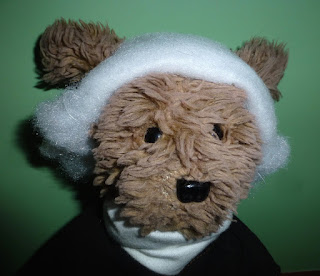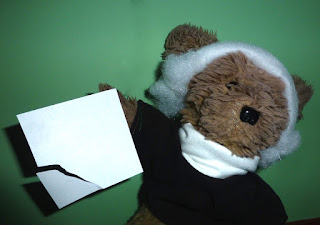
I’ve never had that much interest in the Constitution. It’s old and cranky and set in its ways, and every time I visit, it just rags on and on about the olden days. But I had a look when I found out how important it was to them there Patriots who are holed up in a bird sanctuary with a bunch of assault weapons because they don’t want anyone to get hurt.
Evidently there’s some part of the Constitution that restricts the amount of land the Gummint can own, and that means the Bureau of Land Management is in a heap o’ trouble, boy. Cliven Bundy, an antique deadbeat cow collector with fourteen excess children, says it’s right there in Article One, Section Eight, Clause-a-Mercy, Schedule D, Passive Carryover Limitations, or some such. So I looked it up. And that got me thinking about the District of Columbia.
I’ve always been fond of the District of Columbia because it was square and also because there was that liquor store on McArthur Boulevard that didn’t check I.D. I was born in Arlington, Virginia, which is really a sloughed-off part of the original square, but I never knew how the boundaries came about. What’s not to love about a square city! You could almost prick yourself on it if you stood in the right place. But when Arlington slid off, it wrecked the cool squareness.
 The plans for the District, as it turns out, are right there in the Constitution. They made it a square because a star would have been too hard to survey. It was to encompass a hundred square miles. If they’d tried to come up with an exact hundred-square-mile entity using all the normal squiggly boundary lines, they’d have to determine the area using calculus, and the Founding Fathers weren’t up for that, although my father would have been. So. Square it is. Or was, before Arlington fell off.
The plans for the District, as it turns out, are right there in the Constitution. They made it a square because a star would have been too hard to survey. It was to encompass a hundred square miles. If they’d tried to come up with an exact hundred-square-mile entity using all the normal squiggly boundary lines, they’d have to determine the area using calculus, and the Founding Fathers weren’t up for that, although my father would have been. So. Square it is. Or was, before Arlington fell off.
It was scotched together in 1790 out of pieces donated by the states of Maryland and Virginia, which was nice of them. But Virginia was tired. She had basically caved on territory by that point. She’d already ceded Maryland, for instance, but that was the least of it. Initially Virginia was pretty much the whole country. In 1620 they decided everything above the 40th parallel would be something else, but it was still Virginia out to infinity in the western direction. They didn’t know what was out there, except that it was just more Virginia, dammit, and no mistake. But bit by bit it got carved down until it was only the size of modern Virginia plus West Virginia. West Virginia was too hilly for plantations and eventually got sheared off for insufficient slave-holding. By the time Virginia was asked for another little slice to make D.C., they figured, what the hell.
But if you looked at that square, there was the Potomac River chugging through the southwest corner like a rip in the fabric. I always figured good old Arlington came about because it got torn off the square and succumbed to gravity at the bottom end of the map. But no. After Virginia had graciously ceded its portion of D.C., there came a rumor that someone might outlaw slavery there. And the once and future Virginia portion was a major slave market. Sure enough, in 1850 slave trading was outlawed in the District, but not slavery itself. You could still probably win slaves in Bingo or something.
Unacceptable! The town of Alexandria begged Virginia to take it back before anyone lost money. And so the cool square was ruined, and I eventually showed up as a citizen of Virginia at a time when slavery was technically outlawed but the descendants of slave-owners still didn’t have to fret about sharing any space or treasure with the descendants of slaves.
So, back to Bundyworld. Yes. Article 1, Section 8 of the Constitution does state that Congress could acquire property to establish a seat of government, not to exceed ten miles square. That would be your District of Columbia. It doesn’t say anything at all about limiting government land ownership otherwise.
There is something about being able to organize and discipline the militia to suppress insurrections, though.
The historian weighs in. Quite possibly the most entertaining account of the gummint's acquisition of the District I've seen. A good laugh in the morning buffers some of the world's grimness. Thanks.
Oh dear. I might not write this crap if I knew there were authentic historians listening in.
I meant you are the historian; but my writing does leave room for various interpretations.
My grandfather used to drive me around D.C. about one day a month. We'd usually end up at the Smithsonian. It was amazing how quickly we could be in so many different places so quickly, especially since I had only been in a couple of states at that age. Virginia seemed so exotic!
We went to the Smithsonian all the time. I don't think we went anywhere else. I lived there for 20 years and I've never been to the White House.
In my real-world job before retirement I used to do Environmental Reviews. Those armed malcontents punched through a road in a wildlife preserve without so much as a byyourleave when law abiding citizens would have to do a multi-level Environmental Review. Makes me want to dunk them in a septic tank once or twice. Grr.
There is so much going on that should make me really mad but for some reason these clowns are living in my brain. I want them out of THERE, too.
Pootie, my Man! You done got yerself a right nice hair-piece.Makes you fit the part real good.You figgerin' to take your musket an' a couple o' balls out there to Orrygon?
Because, if you're going to follow it to the letter, that's the sort of arms the Constitution allows you.Not assault rifles.Sorry,Poot.
Pootie thinks a stern look should suffice in most cases.
I love DC–it's almost impossible to get lost there!!
You should check out Ogden Utah!
Way down under the equator here, it seems the Gubmint can do and take any damn thing it pleases, even with referendums showing the local peoples don't want what they're proposing to do or take, the higher ups always find some sort of loophole to get their way.
Hmm. Sounds like more specifics are needed. Where? What? Who? That kind of thing.
Significant trees being cut down against the wishes of the public, historical buildings razed to make way for new developments which often fail before they've begun so the land lies empty for decades. That sort of thing.
Ah. In the pocket of the developers. Sounds like you need to make sure different folks get elected.
if wishes were dollars….
You do as good a job explaining history as you do science! Are you SURE you don't want to have a second career instead of being retired?
I guess this is it. Doesn't pay much but it IS fun.
I really ought to have said "third career". Duh.
Your touch of history, Murr, would make Sara Jane Knight bust with pride. I just know it.
Ha! I never took history (surprise, surprise) in high school. Except Russian History with Paul Belair. I did win the Excellence in History award from the D.A.R. based on a competition that only about five people entered, and the rest of them couldn't produce an essay in English.
People often change what they read to suit their needs.
I don't think these people even change their suits.
The other thing they don't get about Article One, Section Eight, Clause-a-Mercy, Schedule D, Passive Carryover Limitations is that it applies only to states. The BLM land in question, as well as everything west of the Mississippi beginning with the Louisiana Purchase, began as territories acquired from the French, Spaniards and Brits. The U.S. has held title to all of it ever since, except for the parts Congress turned over to settlers or to what later became states.
What you said. Didn't they own EVERYTHING and have been giving it away ever since?
There's much more Constutional history awaiting your deft touch. Get busy!
But…but there's birdz 'n' stuff out there…
Another lovely and amusing lesson. Thanks!
So, you buy all of it, no?
These Clowns are occupying too much space in my brain too and I'm grumpy, mad and tired of their existence !!
I have to agree. There are a lot of horrible things going on in the world but these guys are massively irritating.
Thank you, your article is very good
viagra asli usa